Blue and blue phlox

Blue and blue phlox at nightfall can change the garden beyond recognition. From ordinary flowers, they turn into a bright blue fragrant cloud.

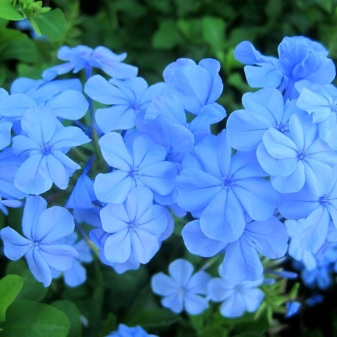
Main characteristics
Phlox are very common plants, they can be found both in flower beds and manicured areas with a fashionable design, as well as in old, abandoned front gardens and gardens. These seemingly rustic flowers combine just such properties that most attract florists:
- pleasant aroma;
- abundant flowering;
- ease of growing and care.
Many people do not particularly like the colors of the phlox, but those who have seen the blue varieties fundamentally disagree with this. They deserve to become a real decoration of a flower garden and a highlight in any garden landscape design. The native land of the plant is the northern part of America. On the territory of Europe, they quickly took root, now they can be found both in gardens and in the wild in forests, mountains, gorges and even on desert plains.


The general description of varieties includes the following properties:
- herbaceous plant;
- erect or creeping shoots, 10-180 cm long;
- the leaf plates are solid, oval in shape, grow oppositely, have a rich green color;
- flowers are small, 2-4 cm in diameter;
- corollas are formed from 5 slightly bent petals, which have different shapes (rounded, with uneven edges, cupped or star-shaped), depending on the type of plant;
- by the time of flowering are spring, summer and autumn.
Most of the blue-colored species belong to the paniculate type, which is distinguished by its decorative appearance and unpretentious care.


Review of the best varieties
Blue and blue phlox are represented by quite numerous varieties.
- "Alexey Lensky" reaches 60-70 cm. Flowers are painted in white-lilac tones: the middle is darker, and the shade brightens towards the edges. White stamens further enhance the contrast of the two colors. The inflorescences are hemispherical, rather dense. Well grown using cuttings.
- "Pride of Russia" can grow up to 1 m. In daylight, the inflorescences have a lilac shade with a tiny asterisk of a light tone in the middle, in the evening the bush acquires a noble blue color. The petals are wavy, with a clear separation, the buds form large, rather dense inflorescences of a slightly rounded conical shape. The stems of the plant are strong enough, do not need a garter.
- "Midshipman" - a small-flowered variety with a dark purple color, which turns blue at dusk. The flowers are cupped with wavy edges and form small inflorescences.
- "Gzhel" rather tall bush, up to 100 cm. The variety has an unusual color: thick dark blue strokes on a white canvas. With this color, the buds look bright blue. The inflorescences are large, the stems are straight, strong. It grows well both in illuminated and semi-shaded areas, most effectively propagated by cuttings.



- "Forget-me-not" does not differ in special height, representatives of the variety grow up to 70 cm. In sunlight, the bush has an even light lilac color, but in the evening, large inflorescences turn into bright blue clouds. The petals have an unusual diamond shape. The shoots are durable, they do not need a garter. The variety is characterized by long flowering and is often used for cutting into bouquets.
- "Awakening" it can reach a height of 80 cm. The lilac color of the buds becomes lighter towards the edges. Rather, the bush takes on a bright blue color.
- "Blue Sirin" differs in the average size of the bush. Small flowers are painted in sky blue color.
- "Sandro Botticelli" characterized by an even lilac color, with the onset of dusk, rather large inflorescences become pale blue, one might even say neon.
The flowering period is long enough, it is easily rooted with the help of cuttings.


- "Blue Paradise" belongs to the most popular varieties of blue phlox. Differs in strong shoots and fast growth. The variety is highly resistant to diseases, especially powdery mildew.
- "Blue joy" It is distinguished by the presence of a blue color not only at dusk, but also in the shade. There is a bright blue eye in the center of the bud.
- "My love, my joy" has a lilac color in the daytime, and becomes bright blue in the mornings and evenings.
- "Blue ocean" differs in unpretentiousness and resistance to weather conditions. Inflorescences become lilac during the day, and after sunset they change color to pale blue.



- "Lilac miracle" belongs to tall plants. In addition, it stands out with rather large flowers and, accordingly, inflorescences. With the onset of evening, it takes on a light blue tint.
- "Blue Moon" a fairly common variety with regular-shaped flowers, which are painted in dark lilac color. In the evening, as well as in cool weather, the blueness of the petals is clearly manifested.
- "Blue Boy" also a popular variety of phlox, with strong shoots and medium-dense inflorescences of dark lilac even color. The color of the petals turns blue in the evening and on cloudy days.
- Bonnie Made differs in rounded inflorescences. The buds have a delicate lavender blue hue.



- Blauer Morgen has a medium size and rather large flowers. The buds are blue with a blue center.
- "Blue Evening" it stands out with small stellate flowers and a sufficient bush height. Representatives of the variety are characterized by a long flowering period. The buds have a beautiful blue color.
- Polarfuchs has a light tone of petals. In daylight, they are lilac with a grayish tint, and in the evening they acquire a delicate silver-blue tint.
- "Magic Blue" is of medium size, has strong stems and long flowering. Large flowers have a lilac-lilac color with a slight silvery tint, and in warm weather they become pink.

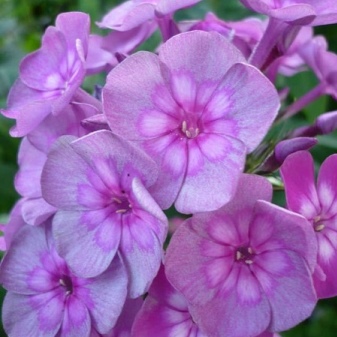
- Othello belongs to paniculate varieties. The bush is tall, strong, with spreading stems, with a high threshold of frost resistance. Inflorescences are round, medium-dense, consisting of fairly large flowers - purple in the afternoon and bright blue after sunset or on a cloudy day. In the center of the bud is a tiny crimson ring.
- "Unique old blue" - a squat bush, which is characterized by lush flowering. The buds are rather large, light purple in color with a light center. Differs in resistance to diseases, as well as a very pleasant smell.
- Zhukovsky has a beautiful blue-white color, with bluish veins on the petals. The bud is shaped like a hyacinth flower with rounded petals. The throat and pharynx of representatives of the variety are purple, in the shade of the inflorescences become a bright blue tone. The bush blooms for the second time in the fall.
- "Neon Fleur blue" refers to not very high paniculate varieties. Inflorescences are small, rather loose. It is characterized by rapid growth and the same aging.



- "Blue Ice" also a paniculate phlox variety. Shoots can be both erect and slightly branched. The buds are blue-white with a lilac eye. Large inflorescences are shaped like a wide pyramid and have a bright aroma.
- Jeffs Blue - a low bush, about 50-60 cm in height. The buds are violet-blue in color with a darker eye.In the evening, they become more blue.
- "Blue Shades" with medium-sized buds with violet-blue stains on a white background of petals. The color becomes brightest in partial shade. Inflorescences are quite dense, bloom long and luxuriantly.
- "Blue Flame" - a representative of a large series with different colors. The petals are white with a slight lilac tint. The eye is purple. In the evening, the inflorescences acquire bluish-blue tones. The bush is fast growing and easy to breed.
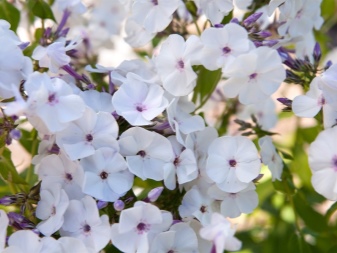
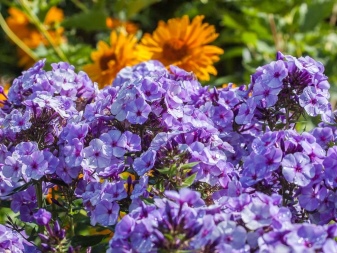
- "Blue Bird" belongs to paniculate phlox, is characterized by medium height and rather large flowers. They are lilac-blue in color with a ring in bright purple. By evening, the buds turn blue. The inflorescences have a round shape and dense structure, located on strong shoots.
- "Cloud" with large flowers of a white and blue tone. It is noteworthy that the petals are visually divided into two parts, one of which is bluer. The bush has a compact size, quite strong. The variety is frost-resistant and is characterized by rapid growth.
- "Aquamarine" differs in unusual color of flowers. In daylight, they are pale lilac, and in the evening or on a cloudy day they acquire a pale blue, luminous shade with a blue and white lining. At the end of summer, a whitish star forms in the center of the bud. Large flowers have a convex and beautiful wavy shape, which is why they are called "blue crystals". Suitable for planting in the shade.
- "Blue Lagoon" differs in lilac-lavender color of inflorescences with a delicate azure tint in the daylight and mother-of-pearl blue in the evening.
The plant is resistant to diseases, has a fairly rapid growth and strength.



General rules for growing
Phlox is propagated mainly by cuttings. The optimal time for planting is late spring (April-May) or early autumn (September-October). It is necessary to choose the timing so that the sprouts have time to take root well before the start of frost. In the selected area, the ground is loosened, small holes are made and cuttings are planted; the distance between them is kept about 30 cm. The sprouts must be moistened for the first 2 weeks every day.
You can also breed blue phlox using layering. Using this method, the shoot of the bush is tilted to the ground and sprinkled with soil, you can additionally fix the branch. After the formation of roots, the stem is separated from the parent bush and transplanted to a separate growth site. You can try to dilute phlox by dividing the bush. An adult plant (4-5 years old) is dug up and divided into several parts, but so that each has a full-fledged root. Delenki are planted in their places.

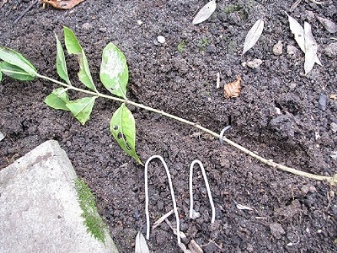
Phloxes are bred mainly in spring or autumn, but the procedure can be carried out in summer, paying a little more attention to the bushes. Phlox seeds are rarely bred, this method is very long-term.
Caring for blue and blue phlox is not too difficult. They need:
- landing in partial shade, so the flowers retain their bright color;
- the soil is suitable for flowers, nutritious, preferably light, non-acidic;
- blue-blue phlox love watering, but moisture stagnation must be excluded;
- for the first time, the bush is fed in the spring (complex fertilizers or containing nitrogen), when setting buds and after flowering (phosphorus-potassium).

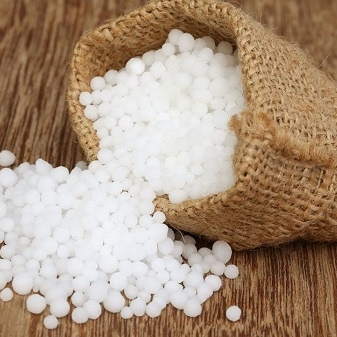
Most blue and blue phloxes are quite resistant to diseases, but flowers can still be affected:
- mosaic, when spots appear on the leaf plates, the color changes, the bush cannot be treated, it is burned;
- fomoz, manifested by the browning of the lower leaves, the diseased plant is not treated, it must be removed, in order to prevent it, the bush is sprayed with Bordeaux liquid (during the flowering period);
- powdery mildew, a fungal disease, which is expressed by white spots on the foliage, the bushes are treated with Bordeaux liquid and avoid excessive moisture.
Of phlox pests, nematodes do the most harm.These miniature worms feed on the sap of the plant, weakening it, and as a result, it dies. Fighting them is very difficult and practically ineffective.
It is recommended to remove the plant, and plant marigolds in its place.


Examples in landscape design
- Phlox grows very quickly, creating lush, cloud-like bushes. They look impressive in single landings.

- Alpine slides and rockeries are decorated with phlox.

- Bushes planted along paths or fences look spectacular.
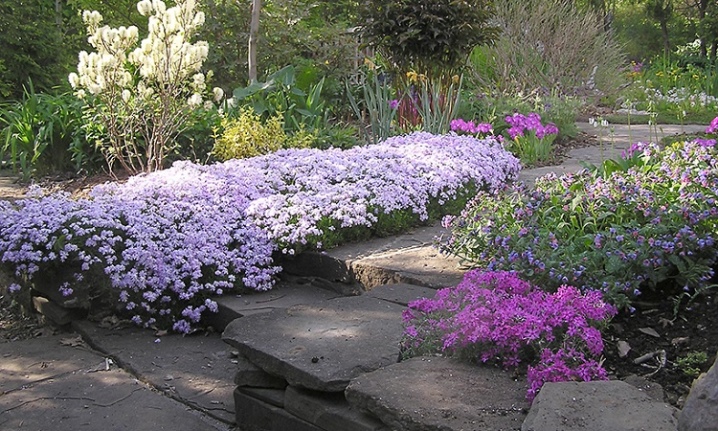
- Blue and blue phloxes harmoniously fit into joint plantings with other flowering species and in mixborders.

- Group plantings of low varieties look especially impressive.

- A riot of colors makes blue and blue phlox varieties a real decoration of the site.

- Phlox is used for cutting into bouquets; they are able to keep a fresh look in vases for a long time.

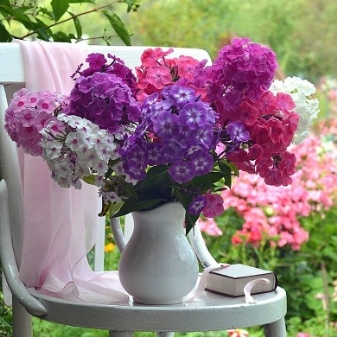
In the next video you will find more information about the phlox spotted Blue Perfume.







































































































The comment was sent successfully.